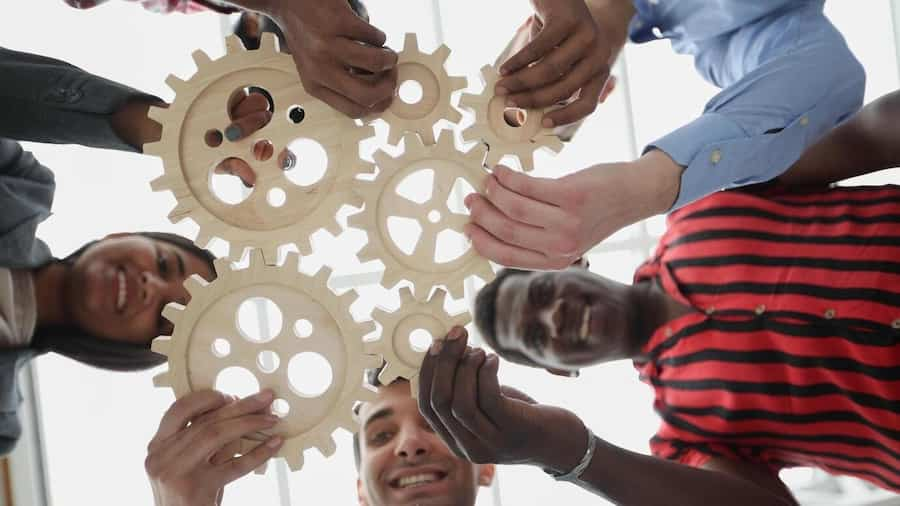Home / Articles
Organizational Change & Development

February 8, 2024
Change is the law of life and those who look only to the past or present are certain to miss the future, a powerful quote by one John F. Kennedy. A reality about life that we all cannot escape is change, it is bound to happen.
Let us now put this into the context of our working environment. Success and longevity of an organization are determined by its ability to change faster than the competitor, customers, and business.
What is Organizational Change & Development?
A process in which behavioral science principles and practices are applied in an organization to effect improvement, greater organizational competence, and effectiveness. It’s also defined as when an organization moves from its current state to a desired future state. This shift is brought about by either internal or external environmental changes, affecting both the organization and individuals within the organization. Internal pressures for change can arise from changes in organizational structure, employee competence, availability of key resources such as financial ability and organizational readiness to embrace change. On the other hand, external pressures of change include technological advancements, social changes, political forces and economic changes.
Organizational development (OD) therefore is a response to change, a strategy intended to change the beliefs, attitudes, values and structures of organizations to create adaptability to new technologies, markets and challenges.
An organization’s role during change
Immediate response after an organization’s awareness of the need for change is to develop a new position or merge two or more existing positions in terms of new goals, strategies, objectives, and new methods of operation which includes ascertaining new work practices, new management structures and new standards of job delivery.
This process requires leaders to exercise proactive rather than reactive measures as it is a systematic and ongoing activity that aids organizations in dealing with current and anticipated challenges.
It is mandatory for the management to manage change during the transition phase simply because this is a critical time when problems emerge and have to be traversed. Such problems include resistance to change, low stability, high levels of stress, conflict, and loss of momentum.
HR Intervention in organizational change & development
During this process two forces remain imminent – those striving to maintain the status quo and those pushing for change. Three actions can work to mitigate these forces;
- Unfreezing – Informing employees that will be most affected by change altering present equilibrium which supports existing behaviors and attitudes.
- Moving/Change – Changes in organizational structures and processes. May entail implementing a new performance appraisal system, installing new equipment or restructuring the organization.
- Refreezing – Ensuring permanence of new behavior and resistance to further change.
A competent HR Consultant/OD Practitioner guides an organization through the following steps to ensure that change and development is successful;
- Need for change awareness – an executive identifies one or more problems that might be solved by the help of an OD Practitioner.
- Consultation between the management of an organization & OD practitioner – the practitioner and client assess each other.
- Data gathering & diagnosis – the OD practitioner works with a team of employees to gather and analyze appropriate information to determine the underlying causes of organizational problems.
- Feedback to the client – the diagnostic data is then given to the organization or department under study by the practitioner in an ethical manner.
- Joint Diagnosis – the client discusses the feedback with the OD practitioner and agree to work on identified problems.
- Joint Action Planning – both parties agree on further action to be taken.
- Action – actual change from one organizational state to another for example reinforcing new behaviors or reorganizing structures.
- Data gathering after action – data must be gathered after action to determine effect in the organization.
There have been a few significant occurrences that have necessitated organizational change and development in the recent past such as the new tax implications by the government, covid-19 pandemic, and global economic recession. Organizations need to proactively gear up by effectively planning and ensuring they have the expertise and technical know-how to mitigate change.
Latest News & Articles
Not Happy with DOSH’s Decision? Here’s What You Must Know Before Appealing
August 6, 2025
Read More →Recruitment Basics in Kenya: What Recruiters Should Know to Avoid Existing Pitfalls and Secure Top Talent
June 24, 2025
Read More →We offer bespoke and tailored professional human resources services delivered by our team of highly qualified and experienced professionals to ensure that you receive the support and expertise that you need.